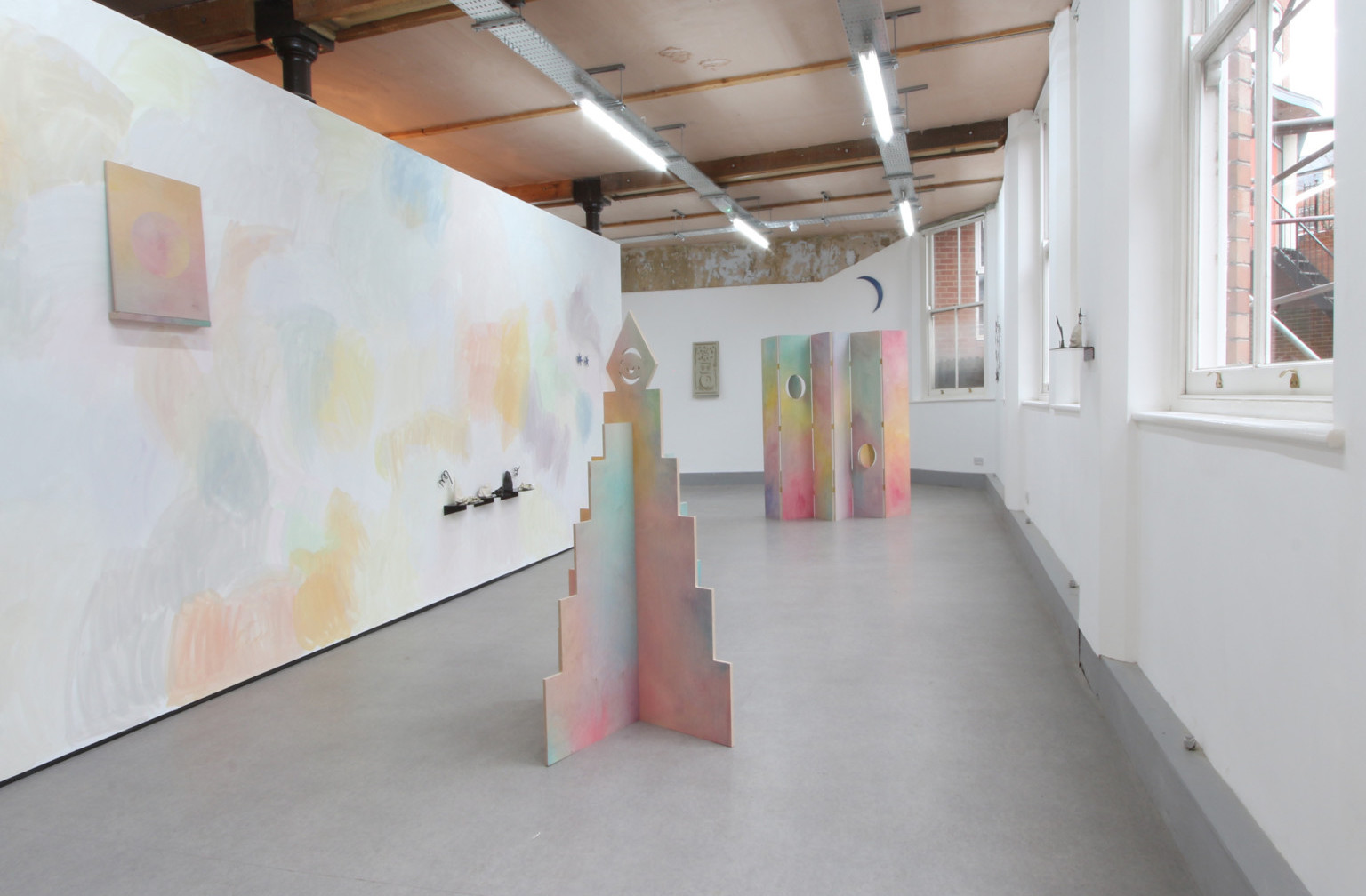Next steps: Elizabeth Gray and Rhian Cooke, graduate residents at The Art House, Wakefield
We speak to recent graduates Rhian Cooke and Elizabeth Gray about their residencies at the The Art House, an organisation that supports emerging artists to take their next steps by providing free studio space, professional development opportunities and bursaries.
Since 2016 The Art House has run an Arts Council England supported graduate residency with five partner universities across the north of England: The University of Leeds, Leeds Arts University, Liverpool John Moores University, The University of Lincoln and The University of Huddersfield, with plans this year to expand to include Sheffield Hallam. The residency offers recent fine art graduates the chance to spend four weeks at The Art House developing their practice. Participants have a studio, access to workshops, tutorials and free on-site accommodation. They also receive a bursary towards materials and living costs while on the residency. Leeds Arts University graduate Rhian Cooke says: “The Art House created this non-pressured environment and gave me concise time and space to really concentrate on my work.” She also appreciated working and living closely with the other residents. “It was good to spend the residency with other graduating artists, seeing how they work and opening up our studio together for Wakefield Art Walk to show the work we’d developed over the residency. The Art House was really good at introducing us to other studio holders and artist-led organisations, so for me it was particularly useful to make connections beyond Leeds.”
Leeds Arts University graduate Rhian Cooke says: “The Art House created this non-pressured environment and gave me concise time and space to really concentrate on my work.” She also appreciated working and living closely with the other residents. “It was good to spend the residency with other graduating artists, seeing how they work and opening up our studio together for Wakefield Art Walk to show the work we’d developed over the residency. The Art House was really good at introducing us to other studio holders and artist-led organisations, so for me it was particularly useful to make connections beyond Leeds.”
As part of the recruitment process, The Art House programme team visits each final-year fine art class to deliver professional development sessions and hold one-to-ones. They then visit the degree shows.
“When we receive an application from a student we already know their work, have an idea of what they’re interested in and what tailored support we can offer,” says programme producer Simon Boase. “We visit a lot of degree shows and each has a different character. Within a cohort of graduate residents we’re looking for artists who are being honest in the work they’re making, not just imitating a style. They might still be working things out or struggling with presentation, but you can quickly see who is using their art to say something.” Elizabeth Gray, a graduate of The University of Lincoln, describes her time as a resident as giving her “complete freedom to develop work”. She was encouraged to experiment with new mediums, including performance. “Showcasing my work at the end of the residency increased my confidence with performing to an intimate audience and I am still working with performance now,” she explains. “The residency also gave me time to think about my practice and how I want to work as an artist. The four weeks I spent there had a significant positive impact on my practice and my mental health.”
Elizabeth Gray, a graduate of The University of Lincoln, describes her time as a resident as giving her “complete freedom to develop work”. She was encouraged to experiment with new mediums, including performance. “Showcasing my work at the end of the residency increased my confidence with performing to an intimate audience and I am still working with performance now,” she explains. “The residency also gave me time to think about my practice and how I want to work as an artist. The four weeks I spent there had a significant positive impact on my practice and my mental health.”
The Art House was established by disabled and non-disabled artists who wanted to create a place where they could work together. Purpose-built, fully accessible facilities – including artists’ studios and a three-bedroom flat with kitchen, living room and en-suite bathrooms – mean that the organisation can provide opportunities without physical barriers.
“For artists who are disabled, graduating is even more difficult to navigate than for non-disabled artists,” notes Boase. “A typical next step for a graduating student is to get a space in an artist-led studio, but it’s common for those spaces to be inaccessible, so the options for graduating artists who are disabled are significantly reduced at their very first step out of art school. We make a concerted effort to encourage applications from artists who self-define as disabled and support them throughout their residency.”
The graduate residency programme includes workshops and tutorials on topics such as applying for funding, project management and budgeting, alongside talks from visiting artists, covering a range of career paths and practical advice on how to survive as an artist. Boase recognises the importance of giving graduates a realistic view of what it is to be an artist.
He says: “We try to build residents’ confidence while providing real-life advice on what makes them selectable in competitive applications and how their career may fluctuate, with successes and quiet periods. That knowledge doesn’t always come through traditional educational routes, which can be aspirational and focus on employability, whereas artists’ careers rarely follow a linear trajectory.”
Interview by Ellen Wilkinson
Images:
1. Rhian Cooke, Once in a Moon Boot, moving image projection, 2017. Photo: Jules Lister
2. The Art House graduate residency group crit. Photo: Jules Lister
3. Elizabeth Gray, Dandy Lion, 2018. Photo: Jas Eccles





